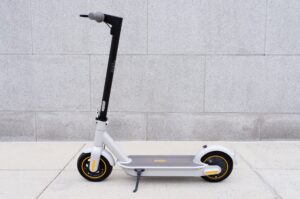In recent years, the urban landscape has witnessed a remarkable shift in commuting preferences, with an increasing number of individuals opting for sustainable and efficient modes of transportation.
Among these, commuter scooters have emerged as a popular choice, offering a convenient and eco-friendly solution to urban mobility challenges. This article explores the reasons behind the rise of commuter scooters and their impact on urban transportation.
Efficiency and Speed
Commuter scooters are renowned for their agility and speed, making them an ideal choice for navigating through congested city streets.
With the ability to weave through traffic and access areas that are off-limits to larger vehicles, these scooters offer a time-saving alternative for daily commutes.
Their lightweight design and compact size make them particularly well-suited for short-distance travel, providing commuters with a practical and efficient means of reaching their destinations.
Environmentally Friendly
One of the key factors contributing to the popularity of commuter scooters is their eco-friendly nature. Electric scooters, in particular, have gained traction as a sustainable mode of transportation.
Emitting zero tailpipe emissions and relying on electric power, these scooters contribute to reduced air pollution and help combat the environmental challenges associated with traditional gasoline-powered vehicles.
As cities globally strive to achieve greener transportation systems, commuter scooters play a crucial role in promoting sustainable living.
Cost-Effective Commuting
Commuter scooters offer a cost-effective alternative to traditional modes of transportation. With lower upfront costs, minimal maintenance requirements, and reduced fuel expenses (for electric scooters), individuals can save money over time.
This affordability factor makes scooters an attractive choice for a wide range of commuters, including students, working professionals, and those seeking economical transport solutions.
Last-Mile Connectivity
Commuter scooters excel in providing last-mile connectivity, addressing the challenge of bridging the gap between public transportation and final destinations.
Riders can easily cover short distances between bus or train stations and their homes or workplaces, reducing dependence on personal cars and contributing to a more integrated and seamless urban transportation network.
Challenges and Regulations
Despite their numerous benefits, the rise of commuter scooters has brought about challenges and regulatory considerations.
Issues such as safety concerns, parking infrastructure, and adherence to traffic regulations have prompted city authorities to develop guidelines and regulations specific to scooter usage.
Striking a balance between encouraging sustainable mobility and ensuring public safety remains a priority for urban planners and policymakers.
Conclusion
Commuter scooters have undoubtedly carved a niche for themselves in the urban mobility landscape.
As cities evolve to accommodate the changing preferences of commuters, these scooters provide a practical, environmentally friendly, and cost-effective solution.
With ongoing advancements in technology and continued efforts to address associated challenges, commuter scooters are likely to remain a vital component of the future urban transportation ecosystem.



